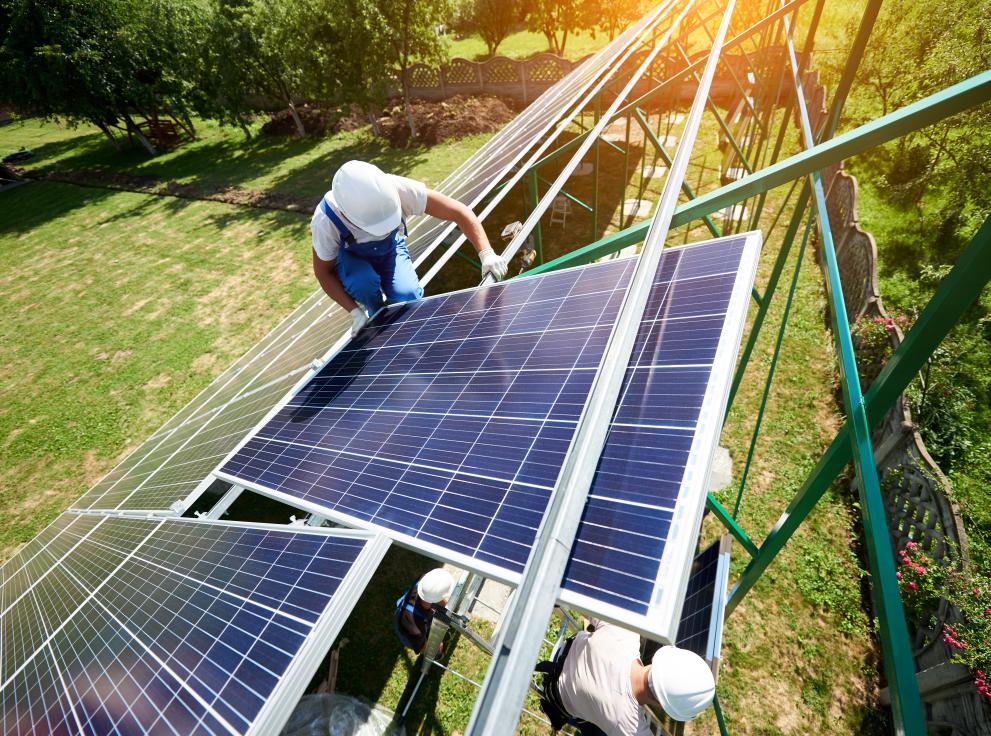
Meeting global climate targets will require rapid decarbonisation of the energy sector. This will entail construction of extensive renewable energy infrastructure, increasing both demand on raw materials and materials-related greenhouse gas emissions. Most current models do not incorporate these impacts into their calculations and there has been limited research into their implications, to which this study, supported by Horizon 2020, adds.
The researchers considered 17 materials that are critical to the construction of a range of low-carbon energy facilities (which included renewables, nuclear energy and carbon capture): seven classed as construction materials (such as cement and aluminium) and ten as specialty metals (such as silver and nickel). They selected 75 climate/energy models (from the IAMC 1.5°C Scenario Explorer database), which provided details on the use of specific energy technologies and had ambitious or moderate goals for limiting climate change.
Using data from existing literature on the material demands of implementing each technology, the researchers calculated the cumulative use of each material over the period 2020–2050 for each scenario. They considered these against current production levels and geological reserves for each material, and calculated the greenhouse gas emissions associated with their production and use, based on existing figures. They incorporated the use of recycled materials into both materials demand and greenhouse gas calculations based on 2020 input recycling rates over the entire period; a sensitivity test assuming both doubled rates and zero rates showed little impact on the final results.
The researchers report that overall demand for materials can be met by known geological reserves in most cases, although it could represent a significant proportion of these reserves (for instance, more than 10% in the case of silver and copper). However, they say that in the case of tellurium, used for high-efficiency CdTe thin-film solar cells1, demand to 2050 could exhaust 88% of known reserves.
Annual production rates of many of these materials may need to increase to meet renewable or low-carbon energy infrastructure demands, according to the researchers, especially given the existing and potentially rising demands from other sectors. Annual demand for aluminium and copper for energy infrastructure could represent 18% of current production over the period to 2050, they say, with solar panels requiring 20% of current annual flat glass production and wind turbines requiring 66.4% of glass fibre production. Solar-grade polysilicon demand could reach 152% of current annual production, with relative demand for some rare metals, including tellurium, exceeding this. The researchers say these findings are in line with previous studies.
Total greenhouse gas emissions from renewable and low-carbon energy infrastructure construction are significant, say the researchers, but are more than offset by the benefits of moving away from fossil fuels.2 They note that the majority of scenarios (up to the 84th percentile) generate less than 20 gigatonnes of carbon dioxide equivalent (Gt CO2eq) by 2050, representing under half of current annual greenhouse gas emissions. According to the researchers, these materials-associated emissions are predominantly driven by the level of wind and solar installations, with solar-grade polysilicon contributing the most (median average of 7.6 Gt CO2eq across scenarios) followed by steel (1.6 Gt), aluminium (1.2 Gt) and cement (0.6 Gt).
The researchers acknowledge that their calculations exclude materials associated with fuel production and consumption, parts manufacturing, construction operations and decommissioning, and hence may underestimate total demand and emissions. They also recognise that they do not include battery or other energy storage infrastructure that may be required as part of new energy systems.
The researchers highlight the importance of implementing proactive policies to decarbonise heavy industry, especially cement and steel production, to reduce emissions from construction of renewable energy infrastructure, such as the Net-Zero Industry Act and the European Critical Raw Materials Act. They also recommend that policies to stimulate annual production of key materials are put in place promptly to anticipate future demand.
Footnotes:
- Cadmium telluride (CdTe) photovoltaic cells are currently the only thin film technology with lower costs than conventional solar cells. They are used in large photovoltaic power stations, such as the Topaz Solar Farm in the US. They represent around 5% of worldwide PV production.
- The study narrowly addresses climate impacts and does not consider wider environmental impacts, such as pollution or impacts on water.
Source:
Wang, S., Hausfather, Z., Davis, S., Lloyd, J., Olson, E. B., Liebermann, L., Núñez-Mujica, G. D., and McBride, J. (2023) Future demand for electricity generation materials under different climate mitigation scenarios. Joule 7(2): 309–332.
To cite this article/service:
“Science for Environment Policy”: European Commission DG Environment News Alert Service, edited by the Science Communication Unit, The University of the West of England, Bristol.
Notes on content:
The contents and views included in Science for Environment Policy are based on independent, peer reviewed research and do not necessarily reflect the position of the European Commission. Please note that this article is a summary of only one study. Other studies may come to other conclusions.
Details
- Publication date
- 8 June 2023
- Author
- Directorate-General for Environment
Contacts
Seaver Wang
- Name
- Seaver Wang
- seaver
 thebreakthrough [dot] org
thebreakthrough [dot] org

